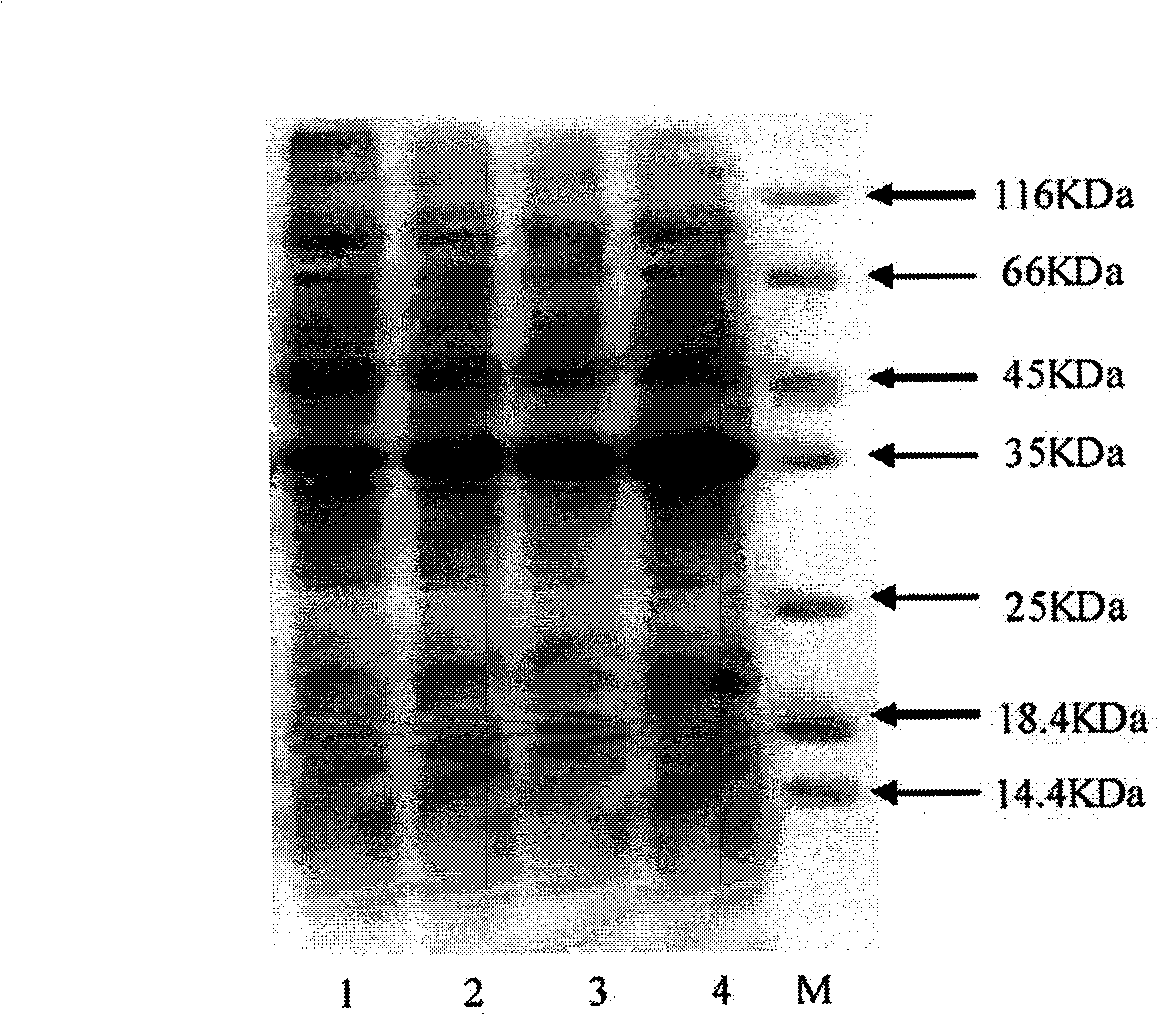High temperature lipase, preparation for mutants thereof and application thereof
A lipase and carrier technology, applied in the fields of genetic engineering and enzyme engineering, can solve the problems of substrate water insolubility and instability
- Summary
- Abstract
- Description
- Claims
- Application Information
AI Technical Summary
Problems solved by technology
Method used
Image
Examples
Embodiment 1
[0134] The cultivation of embodiment 1 Thermotoga petrophila and the extraction of genomic DNA
[0135] The anaerobic, heterotrophic, thermophilic and oleophilic bacteria Thermotoga petrophila (ATCC BAA-488) was cultured on YM medium at 85°C for 4-7 days, and the bacterial liquid was collected for use. The specific operation and medium preparation are as follows:
[0136] The composition of the YM medium is: ASW (artificial seawater) containing 0.2% (w / v) yeast extract, adjusted to pH 7.0 with 6N hydrochloric acid, divided into 30ml Hungate tubes (Hungate tubes), each tube 9ml, and then sterilized in a sterilizing pot at 121°C for 20min. Pass oxygen-free nitrogen and hydrogen into the Hungate tube (nitrogen and hydrogen need to be filtered with a 0.2um sterile filter membrane), and heat to reduce the copper wire in the tube. The tubes are then tightly sealed with sterile butyl rubber stoppers. Prepare the appropriate concentration of Na 2 S, use a 0.2um sterile filter memb...
Embodiment 2
[0157] Cloning and obtaining of embodiment 2 Thermotoga petrophila lipase coding gene
[0158] Design and synthesize degenerate primers based on the conserved sequences of anaerobic, thermophilic and oleophilic lipases:
[0159] Forward primer: 5'-RTGGCCTTYTTCGATWTRCCMCTYGARGAACTGA-3' (SEQ ID NO: 6)
[0160] Reverse primer: 5'-CTAGCCTTYCTCAAATAGTCTCTTCA-3' (SEQ ID NO: 7).
[0161] Wherein, W is A or T, Y is C or T or U, M is A or C, and R is A or G.
[0162] Degenerative PCR amplification was performed using the genomic DNA of Thermotoga petrophila (prepared in Example 1) as a template. The PCR reaction parameters were as follows: denaturation at 94°C for 3 minutes and cooling to 4°C; then denaturation at 94°C for 30 sec, annealing at 50°C for 30 sec, extension at 72°C for 1 min, and after 32 cycles, incubation at 72°C for 10 min. Obtain the whole gene fragment of lipase, perform agarose electrophoresis and recover the fragment with a gel recovery kit (E.Z.N.A. Gel Extracti...
Embodiment 3
[0167] Obtaining of embodiment 3 mutant lipase coding gene
[0168] Primers 5'-CCATGGTTCGCTTTCTTTGACTTACCGCT-3'(SEQ ID NO: 10), 5'-GCGGCCGCTTCCTGAAACGCCTGTT-3'(SEQ ID NO: 11) and 5'-CCATGGTTCGCTTTCTTTGACATGCCGCT-3'(SEQ ID NO: 12) were designed to introduce mutations Points M1F, L6M and K344E (enzyme cutting sites containing NcoI and NotI in the primers). Using the recombinant pET28a (+) obtained in Example 2 as a template, PCR was carried out with primer sequences SEQ ID NO: 10 and SEQ ID NO: 11, and the resulting product was subjected to agarose electrophoresis, and DNA fragments (E.Z.N.A. gel extraction kit). Using the recovered DNA fragment as a template, PCR was performed with primer sequences SEQ ID NO: 12 and SEQ ID NO: 11, and agarose electrophoresis was performed to recover the DNA fragment (E.Z.N.A. Gel Extraction Kit from OMEGA Company). Take 10ul of the recovered DNA fragment, digest it with restriction enzymes NcoI and NotI, then connect it with the pET28a(+) pla...
PUM
| Property | Measurement | Unit |
|---|---|---|
| Boiling point | aaaaa | aaaaa |
| Molecular weight | aaaaa | aaaaa |
| Molecular weight | aaaaa | aaaaa |
Abstract
Description
Claims
Application Information
 Login to View More
Login to View More - R&D
- Intellectual Property
- Life Sciences
- Materials
- Tech Scout
- Unparalleled Data Quality
- Higher Quality Content
- 60% Fewer Hallucinations
Browse by: Latest US Patents, China's latest patents, Technical Efficacy Thesaurus, Application Domain, Technology Topic, Popular Technical Reports.
© 2025 PatSnap. All rights reserved.Legal|Privacy policy|Modern Slavery Act Transparency Statement|Sitemap|About US| Contact US: help@patsnap.com



